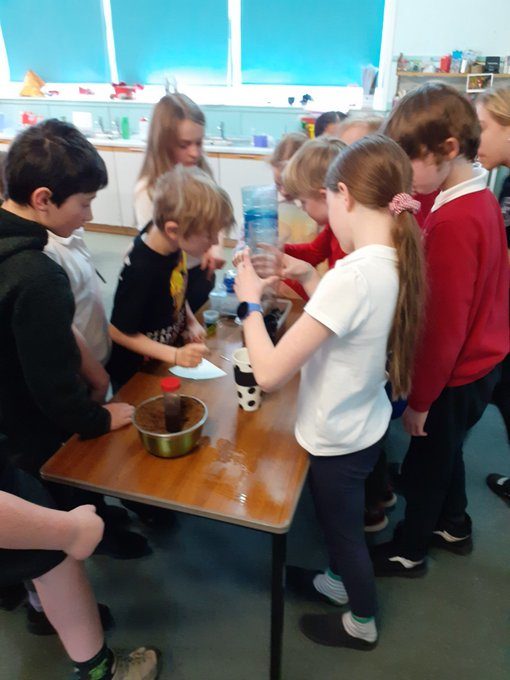Another busy week in Primary 5 – 7 with lots of learning and variety!
With Ms Nixon we were looking at Fractions again this week – identifying, and calculating equivalent fractions and simplification of fractions too. This was an opportunity to use our multiplication and division facts.
The following websites can help revise multiplication facts and help you remember that division and multiplication are inverse operations. Knowing one supports recall of the other. However, it is always good to learn them both.
https://home.oxfordowl.co.uk/times-tables-tips/
https://www.topmarks.co.uk/number-facts/number-fact-families
In maths with Mrs Maclean we have been learning how to find a missing number using inverse operations. We can find the number input into a function machine, given the output and function. A good knowledge of multiplication and division facts helped us. We tried one step, two step and even 3 step problems.
Our Language activities included learning how to write notes and discussing how and where this skill might be useful in our lives. The subject was the water-cycle and we used the notes we took from two sources to draw our own water-cycles diagrams. We also created our own mini water-cycle in the classroom and Alexis has written about it here.
On the 21st of March our class did an experiment to see if we could purify dirty water. We used green food colouring and salt to dirty our water but you could use anything. Then you need a big tub and a small tub and you put the small tub into the big tub. If it is lightweight, you can blue tack your small tub to the bottom. After you make sure that your mixture is mixed well you pour the dirty water into the big tub being very careful not to get any into the small tub. Then you need some cling film to seal your tub closed but do not make it so tight that you cannot do the next step. You take a medium weight item and put it on top of the cling film. The whole point of this experiment is to see that if you leave the tub in a hot place the dirty water should evaporate , turn the water into water vapour and when it touches the cling film it will turn into a liquid (this is called condensation) and because of our weighted thing the water then runs down the cling film because our weighted thing acts as a point. The water will drip into the small tub which is called precipitation. In the actual water cycle this is rain or snow from clouds. You must leave this experiment for about a week for it to work and when it is finished your small tub should be filled with clear water. We hope it will work and will let you know next week.
We wanted to find out more about purifying water so came up with the experiment below. Ask your child to tell you the difference between the two bottles we set up and their hypothesis.

As it was World Water Day on Wednesday we also found out more about Global Goal 6 – Water and Sanitation and the impact that unclean water has on the lives of others. It would be great if you could discuss at home ways you save or conserve water.
On Thursday Miss Dickson taught us how to talk and write about animals in French and we were working on Hockey skills. The weather was so lovely we got outside for P.E. Talking about outside there was a bit of a spectacle in the shelter on Thursday morning. We witnessed a sparrow hawk having his breakfast in the shelter (we watched through the window).
If you would like to find out more about these amazing birds of prey, follow the link below.
https://kidadl.com/facts/animals/sparrowhawk-facts

